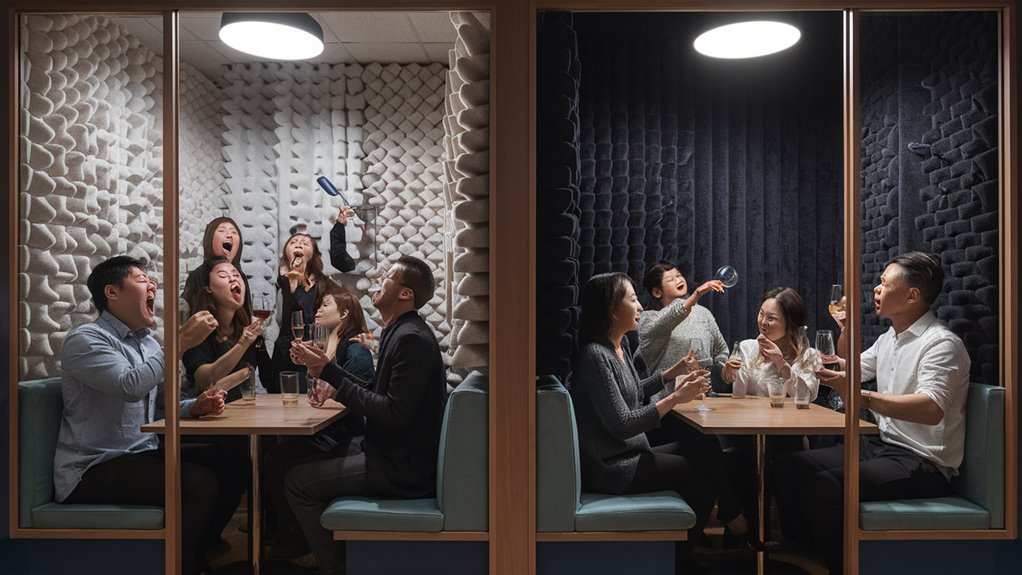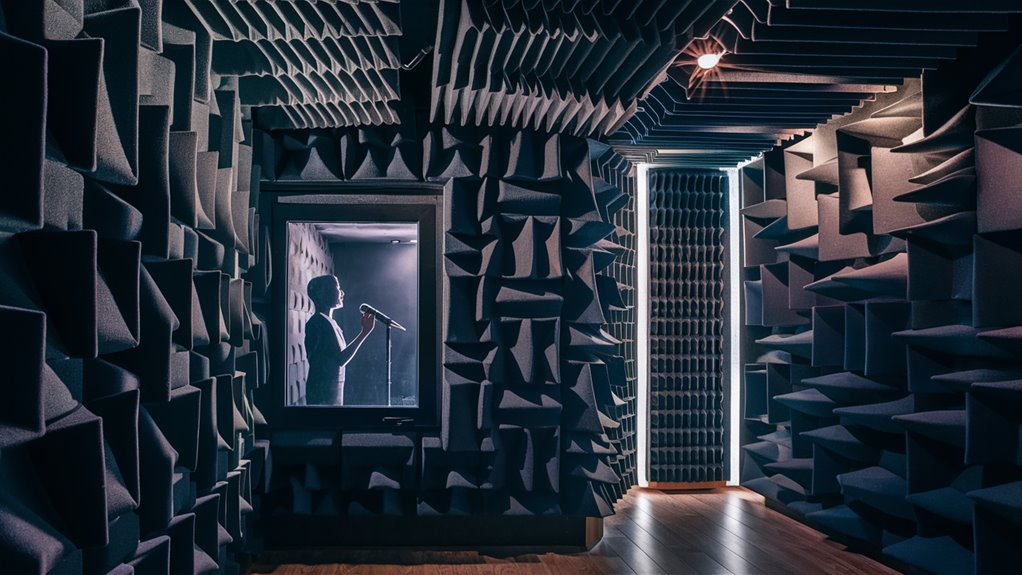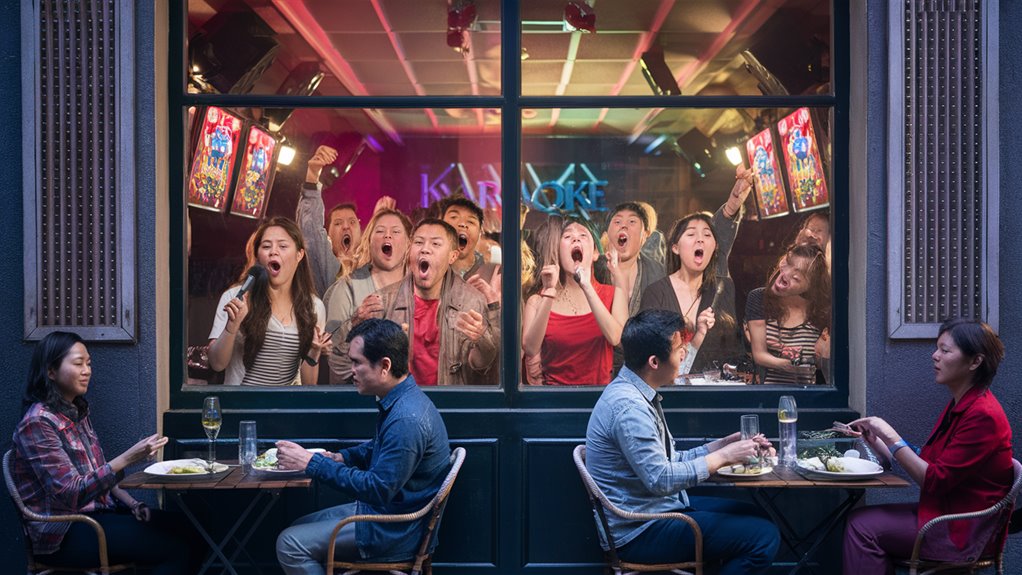
Why Soundproofing is Key in Karaoke Bars

Good soundproofing in karaoke spots is key for great sound and keeps noise away from close shops and homes. Professional sound blocking can cut noise by 40-60 decibels and keep sound at 85-95 dB(A) near the bar.
Key Soundproofing Needs
Strong wall builds with STC levels of 63-65 are needed for good karaoke bar soundproofing. These setups use double-wall builds, staggered studs, and mineral wool to block noise. Handling key sound levels from 125 Hz to 4 kHz makes the singing clear while keeping the right echo time of 0.8-1.2 seconds. Why Karaoke Is a Great Stress
Top Sound Fixes
Using bass traps and sound soaks on 30% of the surface meets NC-25 to NC-30 standards, fits rules, and is key for a good sing spot. These sound fixes help keep noise inside and make the singing space better.
Rules for Noise in Karaoke Bars
Rules for Noise
Local noise rules say karaoke places must keep sound between 85-95 dB(A) at the edges. Good noise control helps keep the bar open and stops fines or having to close.
Need for Good Sound Walls
Sound class levels set rules for karaoke places:
- Walls: At least an STC of 60
- Floors and ceilings: At least an STC of 50
- Sound checks: Need good sound meters
- Sound range check: Covering 63 Hz to 8 kHz
How to Check Noise
Noise checks need clear plans, especially near homes:
- Start level checks
- Always watch sound levels
- Handle key sound levels: 100 Hz to 4 kHz
- Soundproofing must meet NC-25 to NC-30 rules
- Day/night sound rule follow
The sound setup must cut key sound levels and meet Noise Criteria for next door, following rules all the time.
Customer Fun and Soundproofing in Karaoke Places

Key Sound Needs for Good Singing
The karaoke place wins with three key sound needs that shape how fun it is. Knowing how echo time (RT60), sound class levels (STC), and sound cut levels (NRC) work together builds a top sing How to Find a Karaoke Bar With the Best Food Options spot.
Best Sound Levels
Echo time in pro karaoke rooms should be about 0.8-1.2 seconds, good for clear singing. This time lets voices carry well without muddying the sound. A sound class of 55 between rooms is a must, stops sound bleed, and keeps each sing room separate.
Next-Level Sound Fixes
Good karaoke places need sound cut levels of 0.75 or more, picking up sound while keeping key 2-4 kHz voice levels. Using bass traps for 100-500 Hz, and special scatters for 500-2000 Hz sets up the top sound space. This setup makes clear speaker sound and gives studio-like sound that boosts singer trust and fun.
Room-to-Room Sound Blocks for Pro Spaces
Sound Blocks Between Rooms
Room-to-room sound blocks are a big challenge in karaoke spots with many rooms, where sound loss must hit at least 65 dB between 125 Hz to 4 kHz. Good isolation uses layers in wall builds, using heavy vinyl with at least 2 kg/m². 호치민 KTV
Wall Builds for Sound
Pro karaoke room walls need double-wall builds with staggered studs and separate walls. The best setup has two 5/8″ gypsum boards each side, with a 4-inch air gap filled with mineral wool (at least 3.5 pcf). This build gets an STC score of 63-65 when sealed right.
Handle Flanking Paths
Sound control needs good handling of flanking paths.


